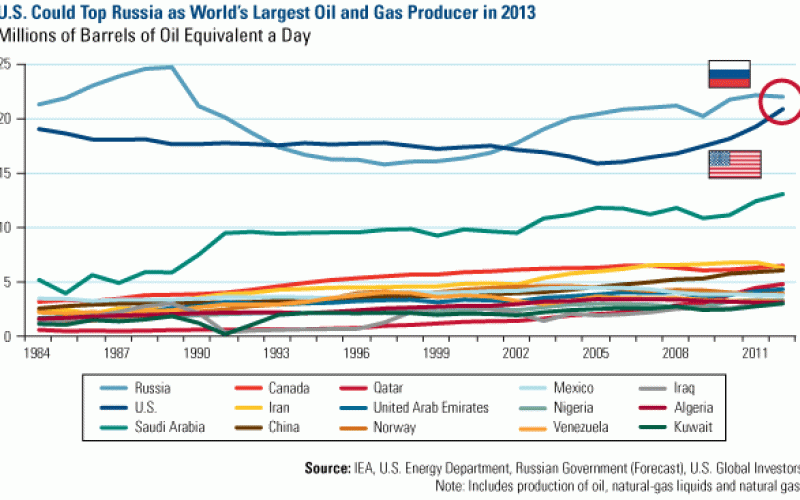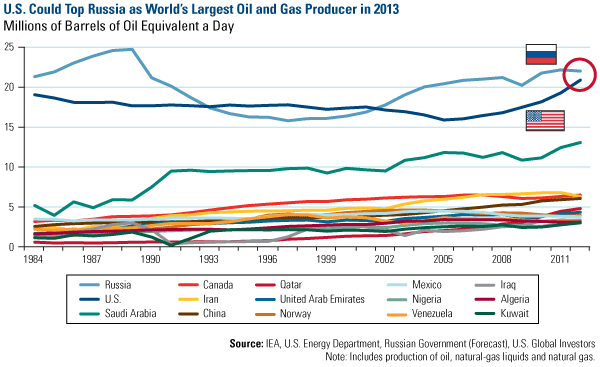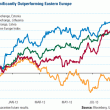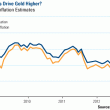Energy and Natural Resources Market Radar (October 7, 2013)
Strengths
- Crude oil futures (WTI) gained less than a dollar this week despite large builds in crude oil inventories, according to data from the Department of Energy.
- The oil and gas industry in Texas continued to strengthen in August, according to an index of key activity. “The Texas Petro Index continued its march into record territory in August,” said economist Karr Ingham, who developed the index. Strong crude oil prices and improving natural gas prices helped boost the index to 289.8, a record level that beat the old record of 288.2 set in July. The latter number was revised upward from 287.7 because of ongoing revisions for the state’s oil production.
- Australia's thermal coal exports for 2013-2014 are forecasted to increase by 6 percent to 192 million tons. The exports are expected to continue rising at an average rate of 8 percent over the next five years, according to Australian government forecasts. In its latest quarterly update, the Bureau of Resources and Energy Economics (BREE) also forecasted a 17 percent rise in Australian iron exports in the 2013-2014 fiscal year as some of the world's biggest producers including Rio Tinto, BHP Billiton and Fortescue Metals Group beef up operations.
Weaknesses
- The start-up of Nucor’s long-awaited, direct reduction iron (DRI) facility in Louisiana has been delayed until the end of the year following a structural failure in the raw material storage area. Construction and hot commissioning continue at the facility, producing 2 million tons per year, which was due to start in the coming weeks. This is just the first of a number of planned continental U.S. DRI facilities looking to take advantage of lower natural gas prices.
- Natural gas prices fell for the second consecutive week, as weekly inventories continue to rise at a faster-than-expected rate amidst a more balanced market. NYMEX futures fell over 2 percent this week, to around $3.50 per million metric British thermal units (mmbtu).
Opportunities
- South Africa’s Absa Capital has received regulatory approval for its planned palladium ETF, with hopes to launch the product by the end of the year. The fund will be exclusively backed by palladium sourced in South Africa, as is its platinum ETF launched back in April. The platinum ETF has since grown to be the world’s largest, holding 666,000 ounces of metal.
- The $1 billion injection for former Xstrata chief executive Mick Davis' new venture X2 Resources may be the start of a wave of new private equity investments in the mining industry. According to one estimate, cash raised for investment funds dedicated to mining and oil has reached a decade high of $24 billion this year. The 2013 year-to-date record haul brings the total close to $100 billion accumulated for resource investments over the past six years. Philip Heywood, director for transaction services at PwC in Vancouver, says although there haven't been that many big deals announced, interest in mining from private equity players is strong and picking up. "There has always been a niche interest from private equity in mining, but now larger players are entering the market," says Heywood. He commented that private equity players are seeing opportunity in the sector now that valuations have come down, sellers expectations are diminished and competition for good assets are much less.
- British Columbia Premier Christy Clark says her province is on the verge of a landmark agreement governing the taxation of liquefied natural gas exported from B.C. This is a deal that would pave the way for billions of dollars in new investment from the sector. Clark said an agreement could come as early as the next month or two and would be enshrined in legislation in the spring. The pact will lay out how much energy companies must pay the government for the right to export the province’s natural gas. “We hope we’ll have it done in the fall,” Clark said during a meeting with The Globe and Mail editorial board in Toronto on Tuesday. “It’s some of the most complex tax legislation that our drafters have ever done, so they say. So it’s going to be very time consuming to write it up. But we want to entrench it in legislation so that there is absolute certainty for the proponents.”
- The U.S. boom in natural gas production is luring investment from foreign manufacturers eager to tap a cheap, abundant supply of fuel and feedstock. Companies from the U.S. and abroad have invested, or are planning to invest, billions of dollars through the rest of the decade in plants that would churn out chemicals, fertilizers, plastics, metals and fuel from gas. Many foreign companies, alone or in joint ventures with U.S. partners, are taking advantage of gas that costs a fraction of what it does in Europe or Asia in order to expand production in the U.S. It is estimated by the Boston Consulting Group that international companies will invest at least $50 billion through the end of the decade on projects that take advantage of low-price natural gas.
Threats
- Until a few months ago, Mexico was one of the rare countries left in the world that didn’t charge taxes on mining production or profits. However, a proposed 7.5 percent tax on resource companies, and as much as 8 percent for gold, silver and platinum miners, is scaring away investors and small players. The country, which ranks fifth globally in terms of mining investment and ranks fourth in exploration spending, currently taxes miners 30 percent of their revenue. And that regime had been working just fine, with mining investment expected to hit a new record of $8 billion by the end of the year. Earlier this year, Mexican President Enrique Peña Nieto introduced a plan to bolster Mexico's feeble tax haul that alarmed miners. The reform focuses on reaping more income tax from higher earners, closing corporate loopholes and widening the tax base. As part of the restructuring, Mexico’s Congress voted in favor of passing a 5 percent tax to redistribute miners' profits to the states and municipalities where they mine. The bill, originally due for a Senate vote in coming months, was later to fold into the government’s fiscal reform, which increased the proposed fee to 7.5 percent of earnings before interest, taxes, depreciation and amortization (EBITDA).
- “The unanticipated unwinding of U.S. quantitative easing and expectations of improving but unspectacular economic growth leave little room for a rebound in gold prices over the next few years, while a further decline remains a real possibility,” Fitch Ratings said on Tuesday. “We have reviewed our portfolio of gold equities following the recent sharp drop in gold prices, but have not taken any ratings actions because we believe that, under our base case, companies have sufficient flexibility to reduce their operating cost base and capex plans,” said Fitch analysts. “We also expect producers to reassess their dividend policies.”















